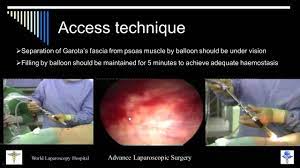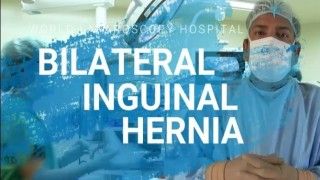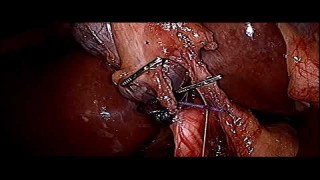Laparoscopic Trans Abdominal Pre-Peritoneal Repair of Left Direct Inguinal Hernia
Add to
Share
369 views
Report
2 months ago
Description
Laparoscopic Trans Abdominal Pre-Peritoneal (TAPP) repair is one of the most widely performed minimally invasive techniques for the management of inguinal hernias. It combines the advantages of laparoscopy with the principles of tension-free mesh repair, providing patients with less postoperative pain, faster recovery, and reduced recurrence rates compared to open surgery. Understanding Direct Inguinal Hernia A direct inguinal hernia occurs when abdominal contents protrude through a weakened area in the posterior wall of the inguinal canal, specifically within Hesselbach’s triangle. Unlike indirect hernias, which follow the path of the inguinal canal, direct hernias usually appear medial to the inferior epigastric vessels and are more common in older adults due to weakening of the transversalis fascia. Indications for Laparoscopic TAPP Repair Symptomatic direct inguinal hernia (pain, bulge, discomfort) Bilateral inguinal hernias Recurrent hernia after open repair Patients seeking quicker return to work and daily activity Surgical Steps in Laparoscopic TAPP Repair 1. Patient Positioning and Anesthesia The procedure is performed under general anesthesia. The patient is placed in the supine position with arms by the side. A slight Trendelenburg tilt allows the intestines to fall away from the lower abdomen. 2. Port Placement and Access A 10 mm infra- or supra-umbilical port is introduced for the laparoscope. Two additional 5 mm working ports are placed in the lower abdomen, typically in the midclavicular line on both sides. 3. Peritoneal Incision and Dissection A peritoneal flap is created by making a transverse incision about 2 cm above the hernia defect. Dissection continues to expose the pre-peritoneal space and key landmarks: inferior epigastric vessels, vas deferens (medially), spermatic vessels (laterally), and Cooper’s ligament. 4. Identification of the Hernia The direct hernia sac is identified medial to the inferior epigastric vessels. The hernia sac is carefully reduced back into the abdominal cavity, ensuring that no contents remain trapped. 5. Mesh Placement A large polypropylene or lightweight mesh (usually 10x15 cm) is placed in the pre-peritoneal space. The mesh covers the direct, indirect, and femoral spaces, providing a broad, tension-free reinforcement. Mesh fixation may be performed using tacks, sutures, or fibrin glue, depending on surgeon preference. 6. Peritoneal Closure The peritoneal flap is closed over the mesh using continuous sutures or tacks, completely covering the prosthesis and preventing direct contact with intra-abdominal organs. Postoperative Care Patients are usually discharged the same or next day. Oral intake is resumed early, and mobilization is encouraged within hours of surgery. Most patients return to normal activity within 1–2 weeks. Advantages of TAPP Repair Minimal postoperative pain Low recurrence rate Excellent visualization of anatomy, especially in bilateral or recurrent hernias Ability to address occult contralateral hernias during the same procedure Conclusion Laparoscopic TAPP repair of a left direct inguinal hernia is a safe and effective technique that combines anatomical precision with the benefits of minimally invasive surgery. By reinforcing the myopectineal orifice with mesh, it not only treats the present hernia but also prevents the development of future defects. This approach is now considered a gold standard for patients requiring durable hernia repair with rapid recovery and minimal morbidity.
Similar Videos






